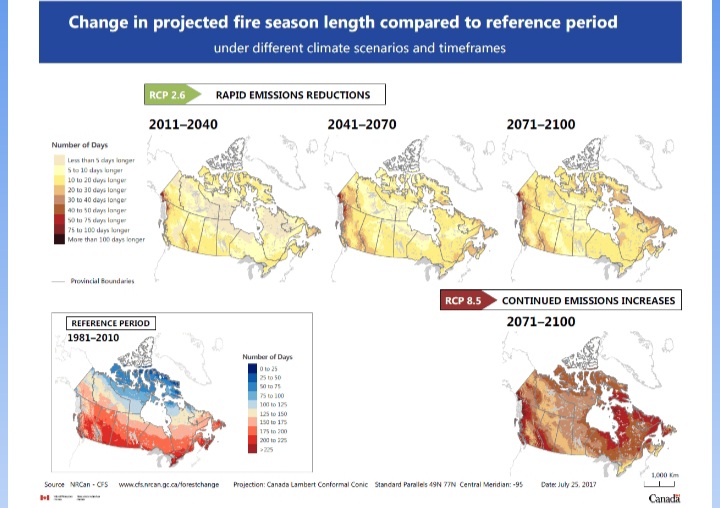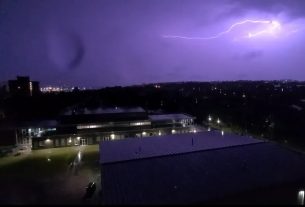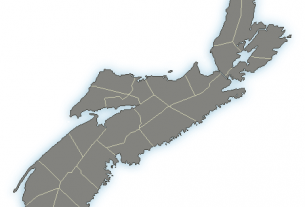**** Info via Environment Canada
Fire Weather
Since the beginning of July, a combination of dry weather, lightning, and unusual heat has fueled hundreds of wildland fires in northern Canada. Smoke from wildfires is causing poor air quality and reducing visibility for parts of British Columbia, Yukon, Northwest Territories and Alberta.
Weather and fire
On July 12, colossal clouds ringed with wildfire smoke, called pyrocumulonimbus, towered over Yellowknife. When a fire becomes powerful enough, it creates its own weather systems akin to thunderstorms. This is when pyrocumulonimbus clouds form. They contain rain that forms above a source of heat, such as wildfire or volcanic eruption. Usually, forest fires are propagated by the wind, but a massive blaze can carry so much heat that its smoke plume rises up to 10–20 km into the sky. Because the smoke plume contains dust, heat and moisture, the smoke can condense and form clouds when it reaches high into the atmosphere.
The McKay Creek fire, in British Columbia, on June 30, 2021. The natural-color image was overlaid with shortwave-infrared light to highlight the active fire. Credit: NASA Earth Observatory.
A pyrocumulonimbus is, therefore, a ferocious thunderstorm that forms within the fire. Lightning and wind fuel the ongoing fire, as well as starting new fires.
Fire weather
There are roughly 8,000 wildfires in Canada each year. As our climate is changing, we expect this number to increase and the length of the fire season to become longer.
Change in projected fire season length compared to the reference period (1981–2010) for short- (2011–2040), medium- (2041–2070), and long-term (2071–2100). Source: Natural Resource Canada.
Fire weather refers to weather conditions that are favourable to trigger fires. Fire weather meteorologists use the fire weather index to estimate the wildfire risk in forest regions. The index is calculated based on consecutive daily temperature, relative humidity, wind speed, and 24-hour rainfall observations. Learn more on how to prepare for wildfires in Canada.




